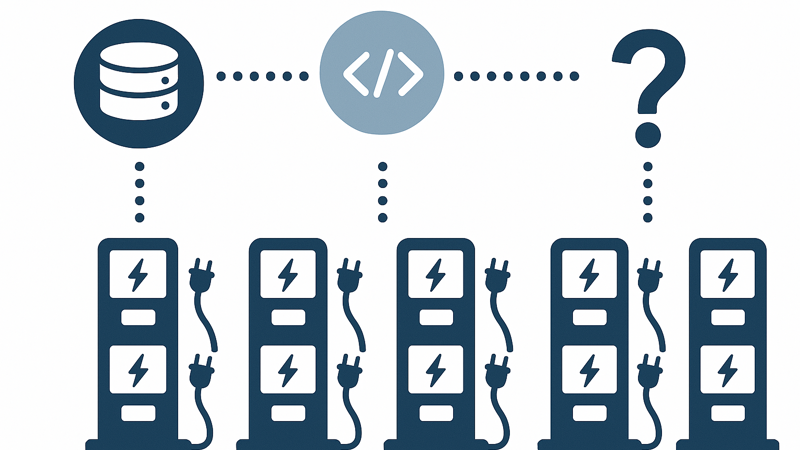
How Back-Office Software Can Solve Your EV Charging Problems
The EV industry has a lot to celebrate.
Recent surveys show that electric cars are being received superbly by drivers, with 99% stating they wouldn't make the switch back to petrol. Add to this the growing sales of EVs to a projected 14 million units this year, and it seems the industry is making good on its promise of bringing the automotive revolution.
But despite these promising signs, there are still problems in EV charging that need to be solved. And we believe that software holds the potential to do this.
We often relate how software works in our industry to how it functions for the iPhone. Without its updates and capabilities, you’d end up with an expensive piece of hardware that you’re unable to improve as technology develops.
In this article, we’ll break down some of the recurring problems in EV charging, and how software has the potential to help overcome them.
Gain Access to 300,000 Chargers across the UK and Europe
Currently, a breadth of industry surveys are reaching the same conclusion: public charger availability is letting us down. The response to this might seem simple. Just build more changing stations, right?
Well, yes and no. Of course, having more charge stations available means drivers have a greater chance of accessibility where and when they need it. But it’s useless pouring resources into creating a larger network if users aren’t able to charge freely across the points available.
That’s why you’ll continue to see us stress the importance of OCPP and open network compliance.
OCPP compliance means that chargers and software are built to be part of a larger network. Adhering to this allows our users access to over 300,000 chargepoints across the UK and Europe. It’s simple. You open our app directly to our map, and if a chargepoint is marked green, you can use it to charge.
This feature is great for fleets making regular long-haul journeys, who can plan their en-route charging with ease and confidence. Pair this with our partnership with third-party mapping providers that advertises chargepoints on the world’s biggest platforms (such as Google and Apple maps), and finding available off-site chargers is no longer an issue.
In contrast, without software connecting hardware to an open network, users could end up with a sea of chargers nearby that each require their own apps to start a charge.
Reduce Running Costs By One Million Pound a Year
Clenergy EV clients like Nottingham City Council are saving up to £1 million a year on fuel costs. With figures like these, it’s clear that software is a game changer in reducing EV costs after a sizable initial outlay.
But how do they do it? As long as your energy provider offers variable tariff options, you can schedule your charges for off-peak times, and greatly reduce the cost of charging.
On top of this, software features can also present significant advantages to those looking to monetise their charge points. For example, using our app you can set different tariffs for fleet chargers and the public simultaneously without any extra admin.
Build Confidence in Our Existing Infrastructure
Many in the industry will have read the recent news of the UK government’s updated charge point regulations and made note of the 99% reliability requirement set for public charge points nationwide.
Put simply, good software is built to make 99% reliability more achievable. One way it does this is through live reporting to show when charge points are down. And when they are down, our software even provides an error code referencing the point of malfunction that caused the charge point to become unavailable.
Using this feature, we save maintenance teams time and money by making sure they can visit sites with the right tools to fix specific issues, eliminating the need for multiple trips.
With chargers able to be put back online quicker, operators can keep their network active and fix problems without headaches, building confidence for average users that chargers will work as expected.
Charge Without Straining The Grid
Shorting the grid can be a real problem. In residential cases, chargepoints without software could trip the mains in your household if used alongside other applications.
The same applies for fleet charging, in which a heavy load may place stress on the grid and mean chargers don’t perform as expected.
Built-in load balancing offers a solution to this. Software provides an intelligent system that can monitor, control and distribute charging loads to make sure that the load is spread out across outlets to account for spikes in electricity usage.
Avoid Being Stuck in Limbo With Transparent Charger Speeds
No one wants to be stuck waiting for a charge. Whether you’re meeting deadlines on a long-haul supply trip or eating into your weekend away, it’s a pain to lose time you haven’t been able to account for.
Simply knowing the location of a chargepoint may be fine if you’ve got time to kill, but could otherwise leave you waiting longer than expected to get going due to varying chargepoint power.
That’s why software available on our app includes a feature that advertises the speed of each chargepoint on our network, ranging from slow, fast, rapid, and ultra-fast.
Solving Problems
Those are just a few of the issues being discussed around EV charging at the moment, but they should go some way in outlining why software holds untapped potential in tackling these.
To see a more sector-specific breakdown of what our software can provide for you, head through to our website’s home page, or contact us via the credentials below.


